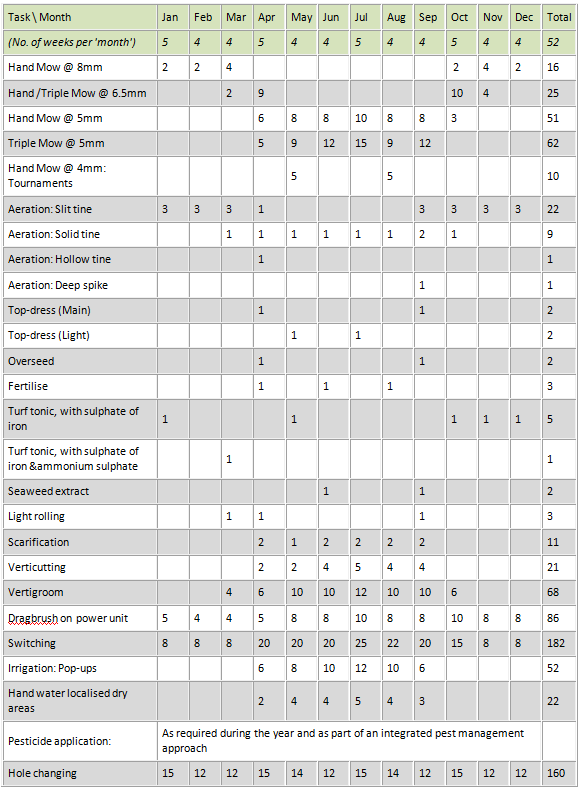The estimated number of occasions for which each task is planned to be carried out can be presented in the form of a maintenance calendar.
The total number of actual operations will vary according to the prevailing weather conditions, as well as the geographic location of the golf course; each factor can influence the length of the growing season and grass vigour.
Maintenance calendars can provide a very useful means for forward planning and the information can be converted into a staff profile, indicating workload levels, material requirements or budget flow.
The 'Months' in the Table are given as 4 or 5 week periods for convenience; this still adds up to 13 weeks per quarter. There is no reason why, for example, the January month is given as 5 weeks, so long as each quarterly block is made up of one 5 week period and the other two are 4 week periods, thus giving 13 weeks for each quarter.
It is useful to have April as a 5 week period as it gives some more leeway in planning, although this is probably arbitrary.
Each month could also be the exact number of days in a calendar month. Whichever system works for the user, then this is the one which should be adopted.
Example of a maintenance calendar

Download a word version so you can edit it to suit your own requirements
The application of pesticides can vary considerably depending upon the existing quality of the golf green: In particular the content of grasses and soil type present. In addition the quality of the maintenance practices carried out can have a significant impact on potential pesticide requirements.
With records kept of past activities (and a diary of work carried out is obviously kept!) the turf manager will be able to have a reasonable idea of the likely maintenance requirements.
More specialist operations, such as aeration using compressed air, power drills or water injected, may also be listed if used. The same will apply if leatherjackets or chafer grubs are a particular problem.
Depth of scarification or verticutting, as well as irrigation water applied, is relative to the conditions so a slightly heavier verticut may result in this operation only being carried out 2 or 3 times in a given month instead of on a stated 4 occasions.
